Radish herbaceous plants originate from Southeastern Asia. Their cultivation started about 2700 years BC. Also, there is evidence that ancient Egyptians ate radishes before the building of pyramids. As for America, radishes are among the first cultivated crops introduced to this continent from Europe.
These plants prefer a colder climate and, in really adequate conditions which include enough sun, moisture, and fertile soil, they grow very quickly. Nowadays, we can eat radishes as food as well as use them in medicine, and the fuel industry.
Facts about Radishes
- Use them as food
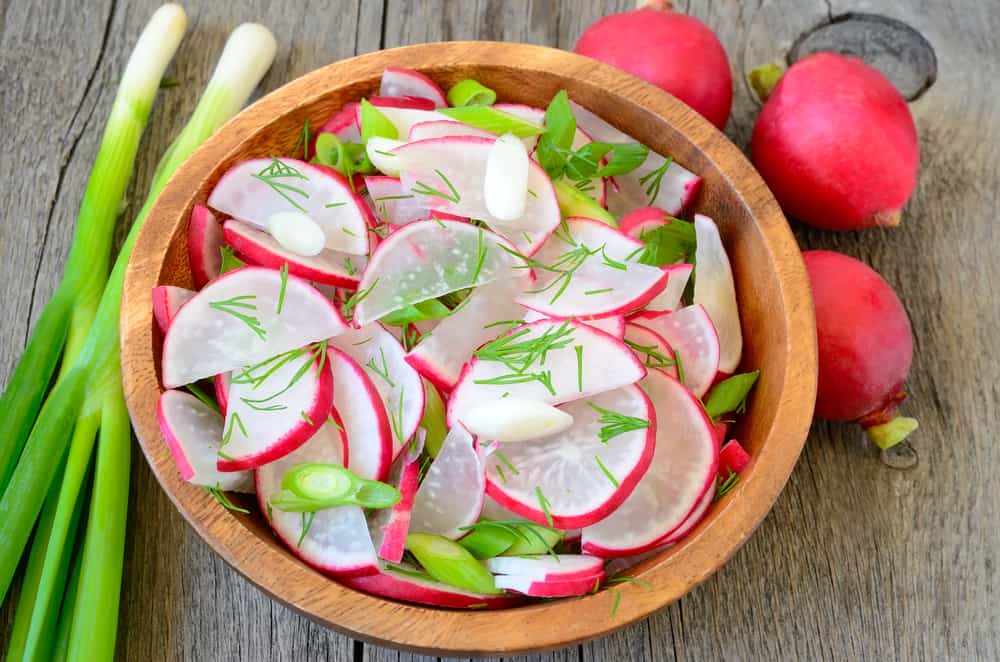
Every part of this vegetable is edible. Radishes’ roots have a crunchy texture and mild to hot peppery flavor. You can eat them as a salad, but there are possibilities to pickle, sauté, boil, and fry these valuable veggies. However, you can consume leaves as well, and use seeds of these plants as a spice.
- They are valuable nutrients
Radishes are a rich source of vitamins, including vitamin C and those from the B group. Also, it contains minerals, including calcium, magnesium, potassium, manganese, and copper, as well as dietary fibers.
- Radishes as a medicine
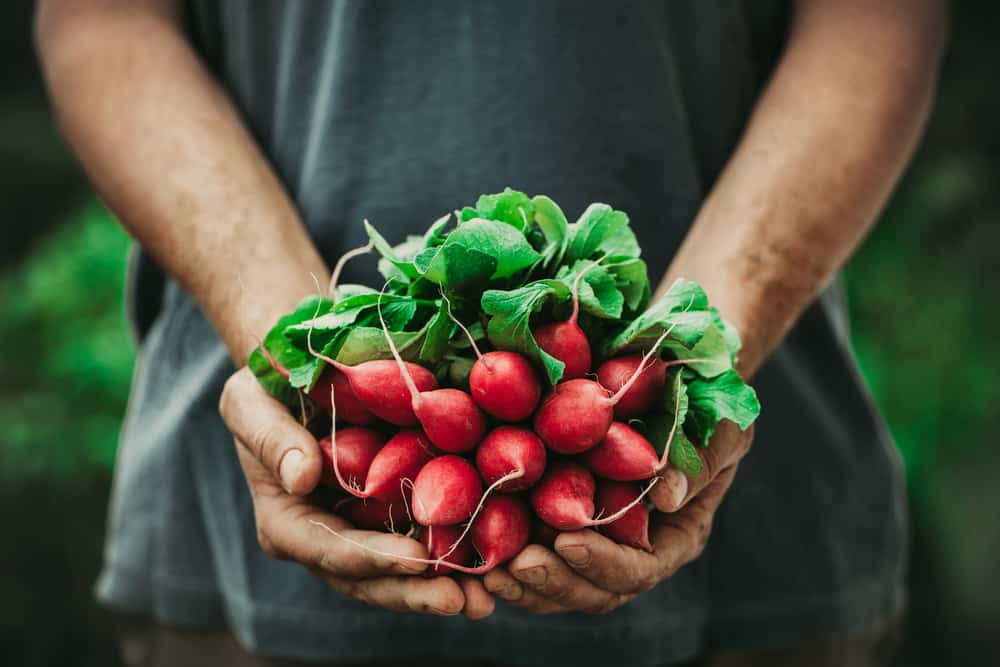
These plants are well-known as a supplement in the diet of patients with kidney stones, bad skin, and intestinal parasites.
They can help in relieving stomach ache, facilitating digestion, and regulating blood pressure since it can eliminate the excess body water. Moreover, they contain sulforaphane. It is believed that this compound can prevent cancer development and inhibit cytotoxic effects on its cells.
Types of Radishes
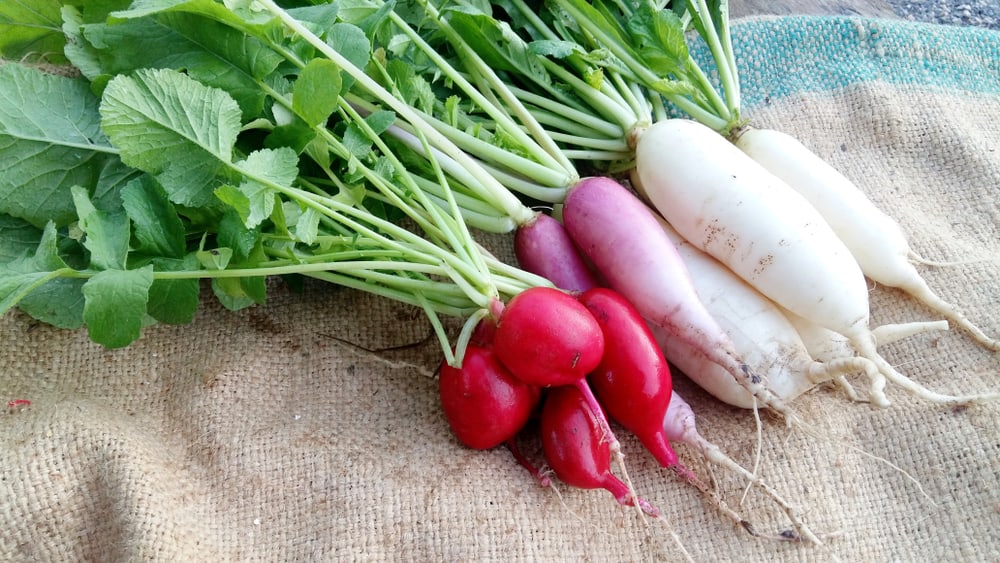
These plants’ roots can be cylindrical, round, or tapered, and their size depends on the type you decide to cultivate. It can vary from the small spring type with roots large barely 1 inch (2.5 cm) to the significant winter varieties with roots large up to 24 inches (61 cm).
Nowadays, you can pick out different colors of these delicious vegetable’s roots, including many shades of pink, mauve, red, yellow, and even white or black.
There are three different types of radishes:
- An early type
This type develops properly just during the cold months of early spring. It can mature quickly (in approximately 20 to 30 days).
- A midseason type
This type is heat resistant, and you can sow it during a period between May and August. You can count that this type of radishes requires about 30 to 40 days for proper maturing.
- A late type
This type is considered winter radishes. If you live in a warm area, you can sow it throughout the winter. If you are one of those people who live in temperate zones, sow your radishes in late summer or even autumn. You will get a mature crop after 60 to 70 days.
Health Benefits of Radishes
This annual or biennial plant is a rich source of many valuable nutrients.
- Nutrients – These low-calorie root vegetables contain dietary fibers, antioxidants, electrolytes, vitamins (vitamin A, C, E, K, B-1, B-2, B-6, and folates), minerals (iron, potassium, calcium, magnesium, sodium, copper, manganese, and zinc).
- Phyto-nutrients – They also contain detoxifying agent phytochemicals (indoles) and flavonoid antioxidants such as β-carotene, lutein, and zeaxanthin.
- Calories – They provide about 16 calories per 100 g.
- Sulforaphane – They contain sulforaphane (isothiocyanate antioxidant compound) which has a proven role against some types of cancer, including prostate, breast, ovarian, and colon ones.
Recommended varieties of radishes |
|||||
| Spring | Summer | Winter | |||
| Varieties | Days to harvest | Varieties | Days to harvest | Varieties | Days to harvest |
| Snow Belle | 30 | Icicle | 25 | Tama Hybrid | 70 |
| Champion | 28 | French Breakfast | 23 | Chinese White | 60 |
| Burpee White | 25 | Round Black Spanish | 55 | ||
| Easter Egg | 25 | China Rose | 52 | ||
| Plum Purple | 25 | ||||
| Fuego | 25 | ||||
| Cherry Queen Hybrid | 24 | ||||
| Early Scarlet Globe | 23 | ||||
| Cherry Belle | 22 | ||||
Tips on How to Plant Radishes in Your Garden
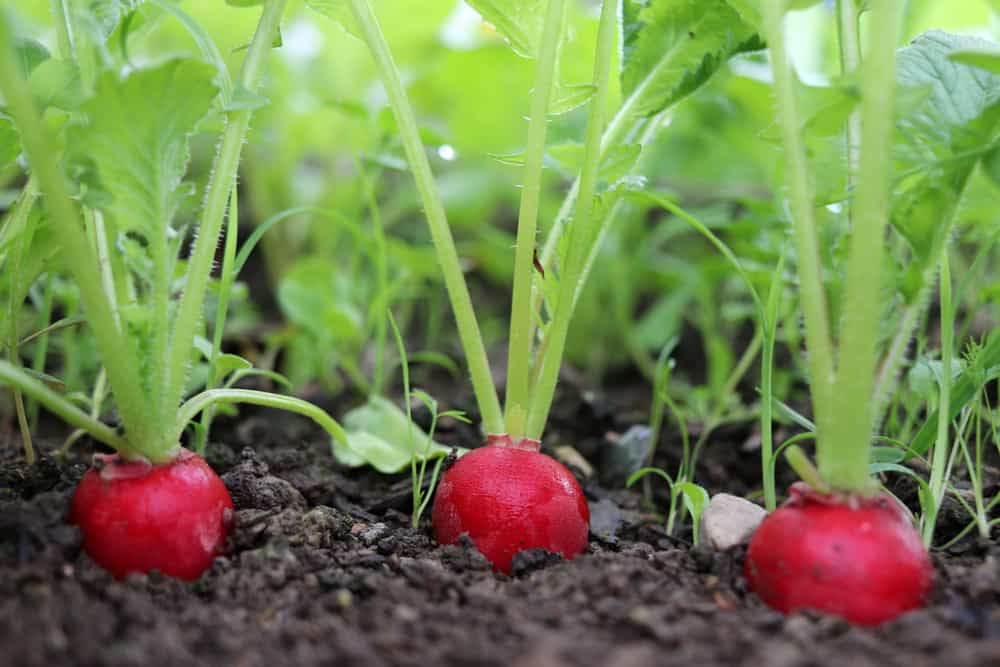
Radishes are a cold-weather crop, and you can sow them in your garden in early spring, approximately two to three weeks before the average date of the last frost in the region where you live.
Since you can harvest radishes every 22 to 70 days, successive sowing every two weeks in both spring and autumn will provide you with the continuous supplies of these veggies.
Average radish yield
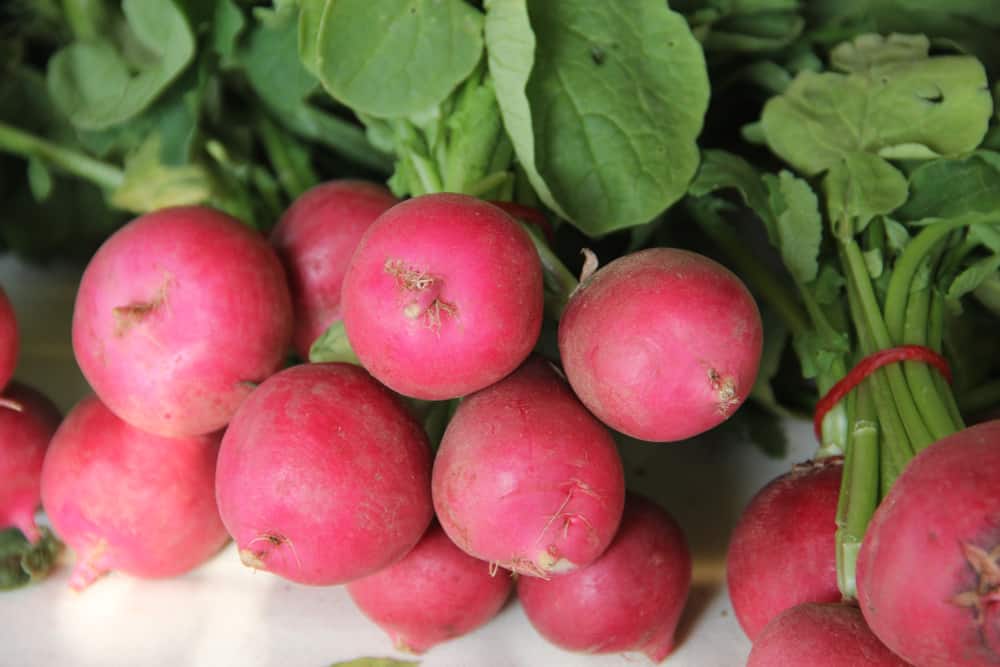
You can quickly calculate the number of plants that your family will consume if you are aware that every member of the household needs at least fifteen radishes each month.
An appropriate site
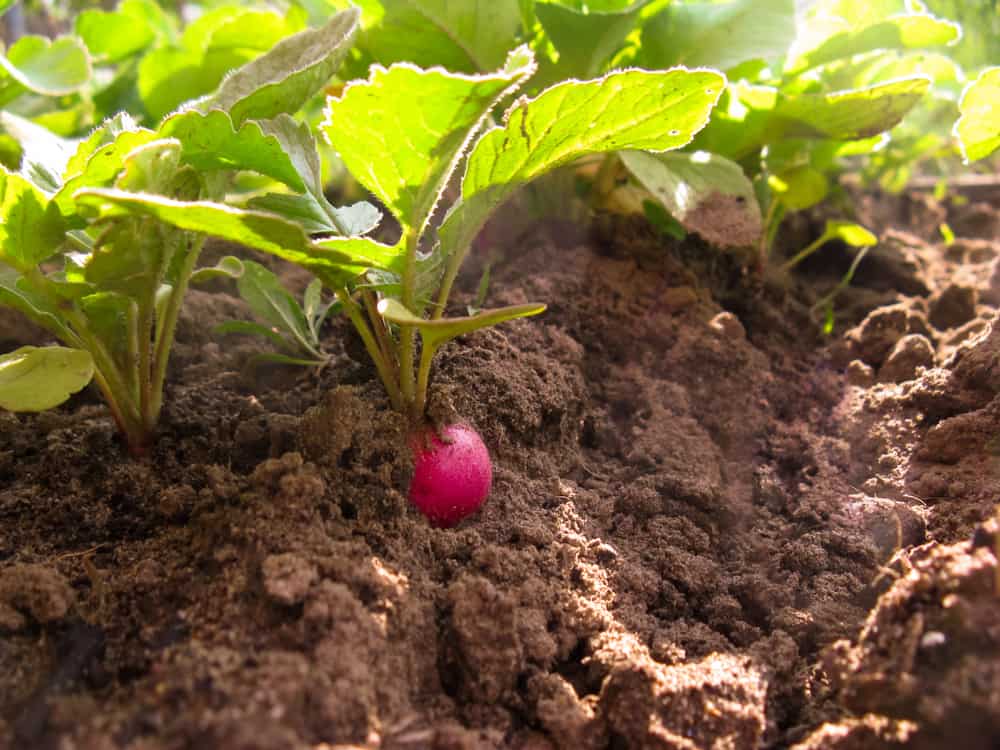
You should always try to plant your radishes in a sunny spot, and avoid planting them at the part of the garden with too much shade. Otherwise, they will produce larger leaves instead of roots.
The quality of the soil
Plant them in loose soil without any lumps and rocks which can cause the appearance of malformed roots. Take care that the ground is well-drained and that pH is between 5.5 and 6.8.
Also, it is essential that your soil is rich in organic matter, but not too compacted or overly fertile. To improve drainage, you can add some sand to loosen it.
How many seeds you need
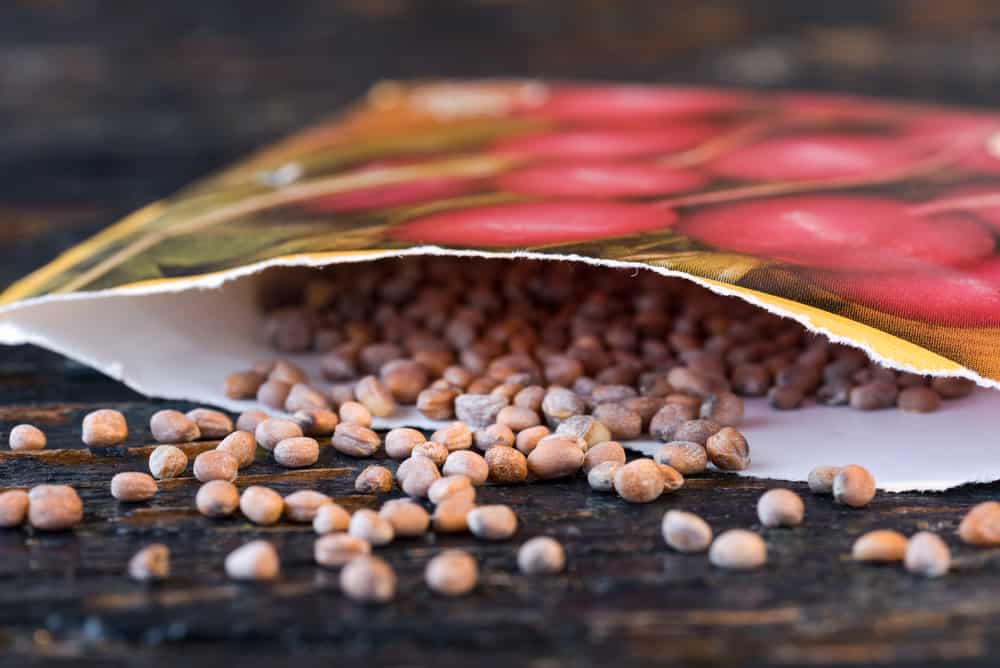
In average, a package of radishes seeds contains between 250 and 500 seeds apiece. If you know that just about 75% of seeds from the packet will germinate, you can calculate the level of harvesting.
Generally speaking, you can produce a row of radishes long about 100 feet (30.5 m) with approximately 0.5 ounces (14 grams) of seed.
Spacing
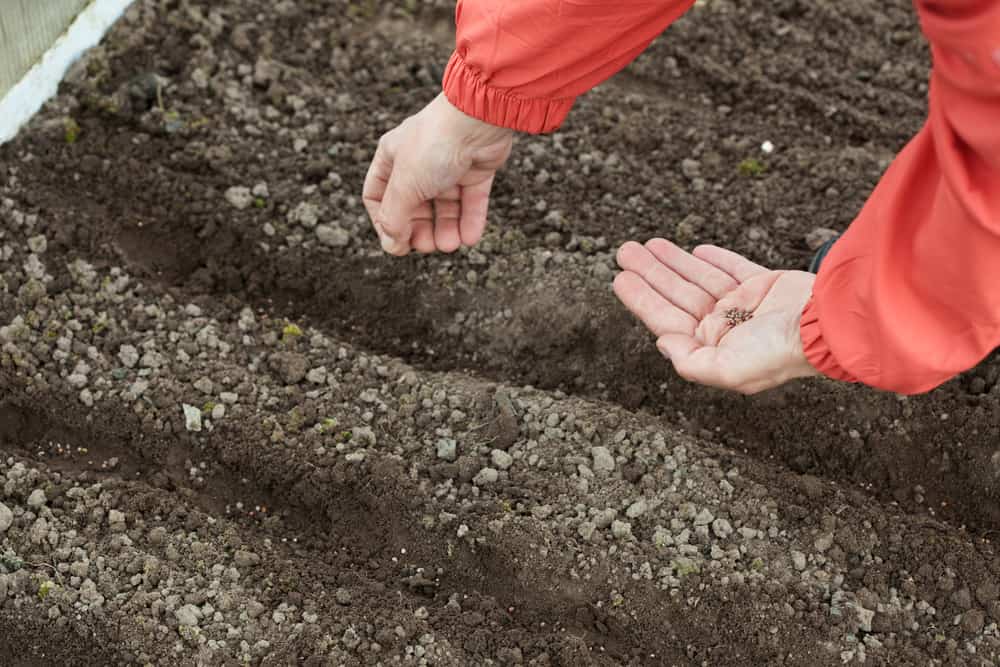
You should sow seeds approximately 0.5 inches (1.3 cm) deep and 1 inch (2.5 cm) apart. Also, place seedlings in wide rows at a distance of 1 to 4 inches (2.5 – 10 cm), depending on the type of radishes you choose.
You will probably need to give them more space if it is about winter varieties. Try to provide space between single rows of at least 10 to 16 inches (25.5 – 40.5 cm) apart.
Combining radishes with other vegetables
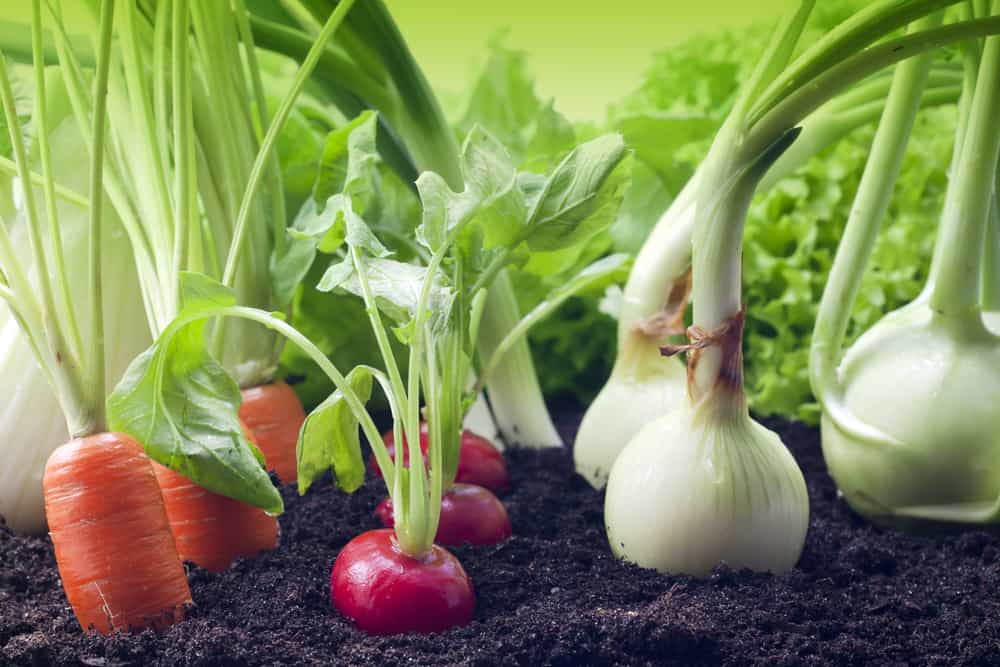
Since radishes need just five days to germinate and show first leaves, many gardeners mix their seeds with the seeds of carrots, peas, parsnip, potatoes, onion, or beets which germinate much more slowly.
That way, young radishes will mark the rows of sown vegetables, and you will avoid a possibility of digging them up accidentally while weeding. After harvesting them, your radishes will leave plenty of space for other plants to spread out as they grow.
A spring planting
Start sowing seeds directly in your garden approximately 4 to 6 weeks before the last frost. There is no need to replant them and to disturb their gentle roots. If you plant a new round of seeds every ten to fifteen days, you will get a continuous harvest throughout late spring and the beginning of summer.
A fall planting
The best thing is that you can plant radishes by early fall, which is later than other root crops. Just take care to sow seeds at least a month before the first fall frost.
Growing radishes in containers
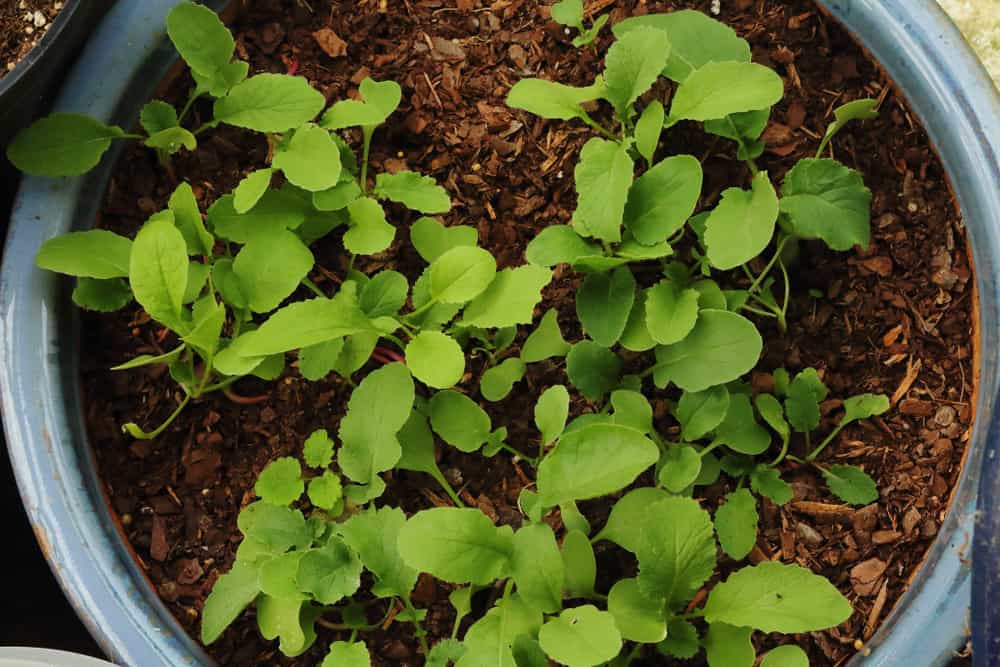
Yes, you can grow this vegetable in the round containers. Simply sow seeds in concentric circles and put them at least 6 inches (15 cm) deep into the ground. Move them to a colder place if the weather becomes warm.
Watering
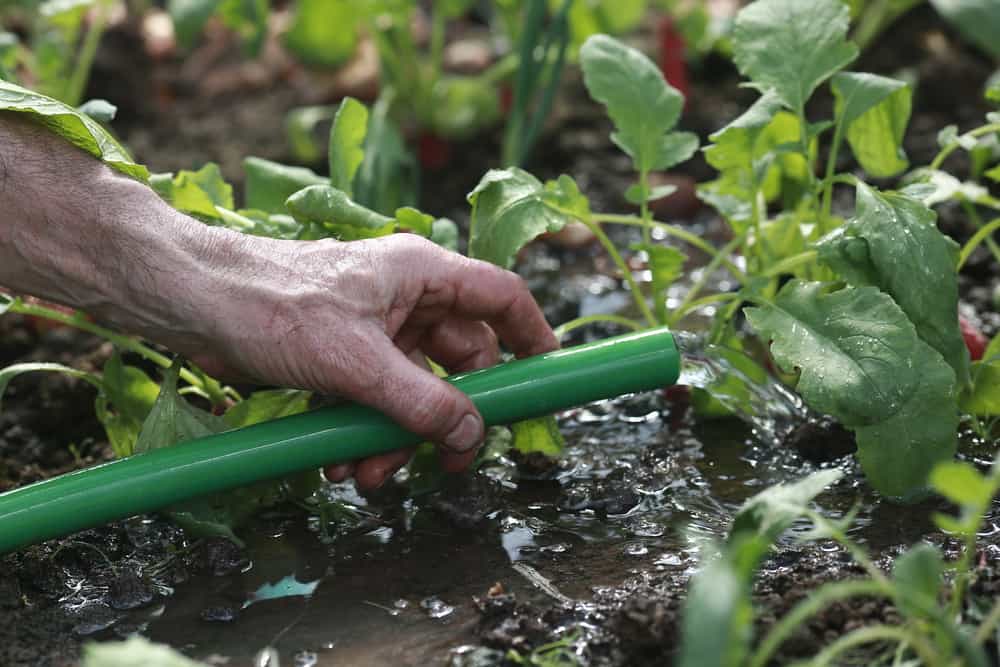
Your radishes will like moist but not too wet soil. You can expect your plants to grow healthy if you water them regularly. If you let the soil becomes too dry, the taste of your radishes will become woody. On the other hand, if excessive watering your plants, their roots will start rotting.
Feeding
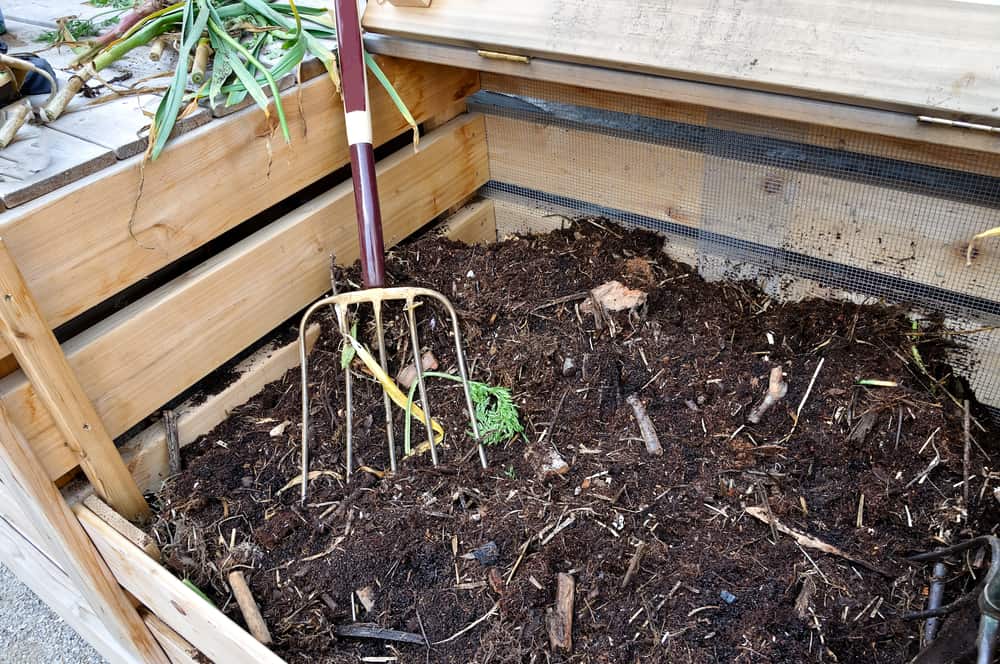
If your soil doesn’t contain enough organic matter, some aged compost will be the right choice for your radishes. You may solve many issues with the poor soil if you add a few inches of all-purpose fertilizer or compost into the planting site.
Don’t use fertilizers high in nitrogen or too fresh manure to avoid encouraging lush foliage. On the other hand, it is an excellent solution to add some wood ashes into mulch and keep roots maggot far away from your veggies. Plus, ashes will help your soil retain enough moisture necessary for healthy and lush growth of your radishes.
Thinning
To allow the radishes’ roots to grow round and firm, you need to start thinning your plants as soon as their tops reach 1 to 2 inches (2.5 – 5 cm) in height. It will be excellent thinning them to about 3-inch (7.6 cm) spacing.
Seeds storing
Keep in mind that you can use the same seeds if storing them in a cold and dark place.
If you prefer saving your own seeds for the next season, it is vital to choose to grow just one radish variety in your garden. That is the only way to avoid cross-pollinating of different radishes and losing their primary characteristics.
Harvesting of Radishes
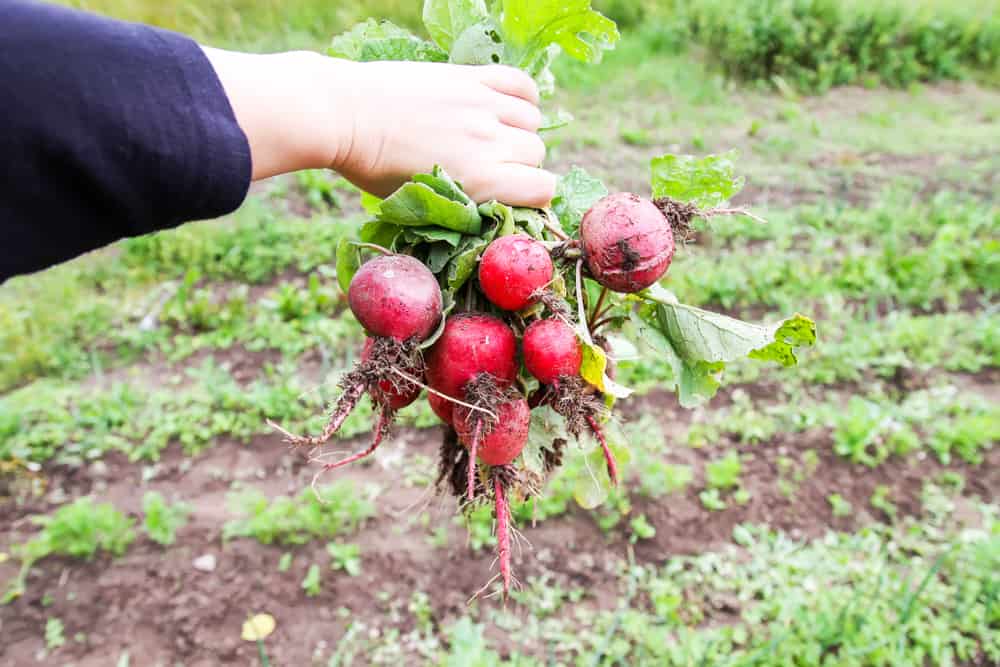
Depending on the type of radishes you decide to plant, you need to count on the different number of days to fully mature. As I have already mentioned, the early type will mature after less than a month. You need to wait more than a month for a midseason type, and two months to harvest a winter type of radishes.
You can be sure that the harvesting time has come after noticing that roots of your radishes reach 1 inch (2.5 cm) across. When they reach the right size, you need to pull them out of the ground. Avoid postponing the harvest of your veggies too much. I am sure that you don’t want to eat tough, pithy, and tasteless radishes.
Possible Problems on Planting Radishes
Radish pests
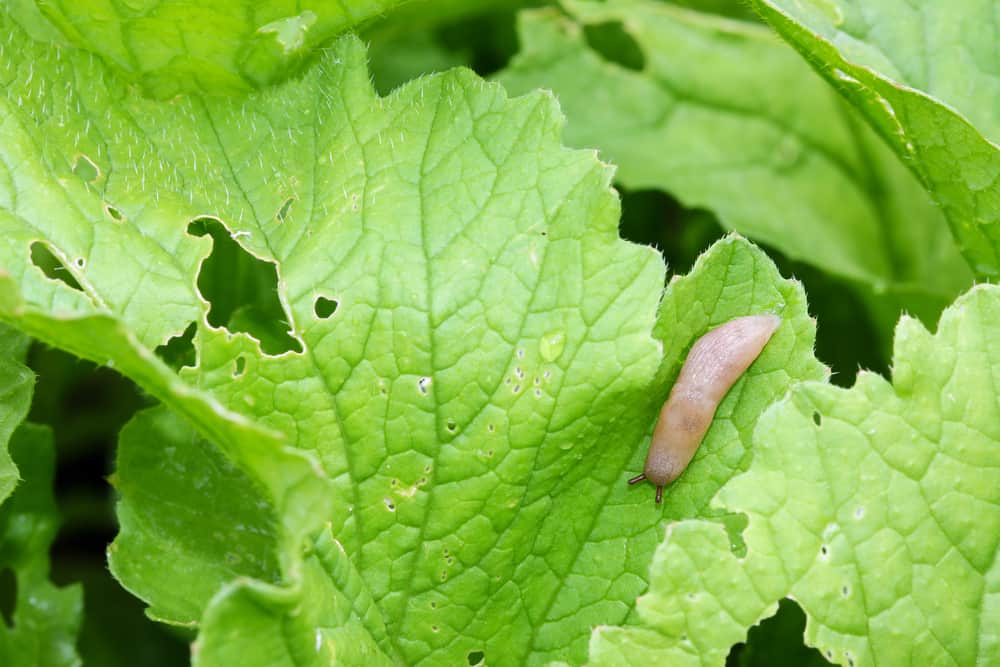
Sometimes you may notice root maggots or aphids attacking your radishes. In that case, you need to destroy infested foliage. Fortunately, since this vegetable proliferates, pests are usually not a significant issue. Also, you can easily avoid root maggots with correct crop rotation and by adding wood ashes in the soil.
- Flea beetle– They can cover leaves with small holes. Affected areas of seedlings will turn brown and die eventually.
- Slugs and snails– The young radishes’ seedlings are an excellent food for those creatures. If you spot the tell-tale slime trail on the ground around your plants, you need to make some beer traps or barriers to keep them away.
Radish diseases
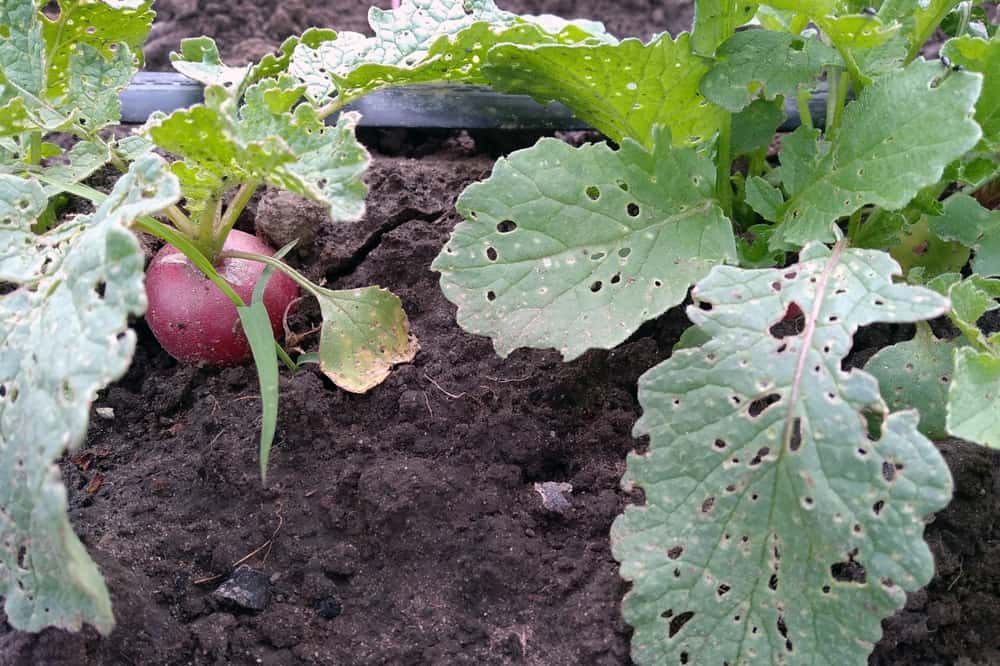
You don’t need to worry about some severe disease problems of your radishes. Actually, there is no risk of disease outbreaks, especially if you consider the possibility of a three-year rotation of crop. In other words, if you plant radishes at the same place just every third year, you will probably prevent any possible diseases.
It is possible to notice black roots (usually it is about dark spots at the bottom of the radishes’ roots) in your region. The solution to avoid this issue is to grow just round radish varieties for a few years.
- Brassica downy mildew– This disease causes changes on the leaves of your radishes. They become yellow, and you can notice some white, fuzzy patches on their undersides. At the same time, plants’ roots may turn brown. If this disease occurs in your garden, you should remove infected plants right away and rotate crops regularly.
- Weeds– Always keep in mind that many weeds can crowd out your radishes very quickly. Therefore, try to keep the part of the garden where you grow these veggies entirely weed-free.
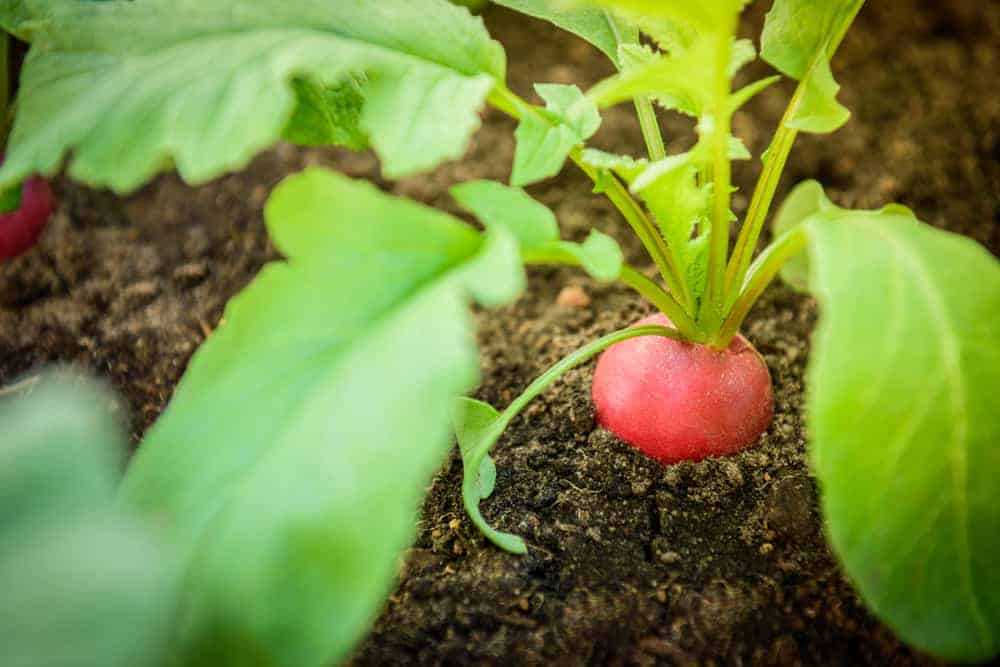
Did indoor greens this way all last year until November when we went out west to ski (Nelson, BC) – now we are back home so doing it again. Once you get on to it and figure out how much your family needs, then it’s just easy and so beneficial. Thank you, Peter!!!